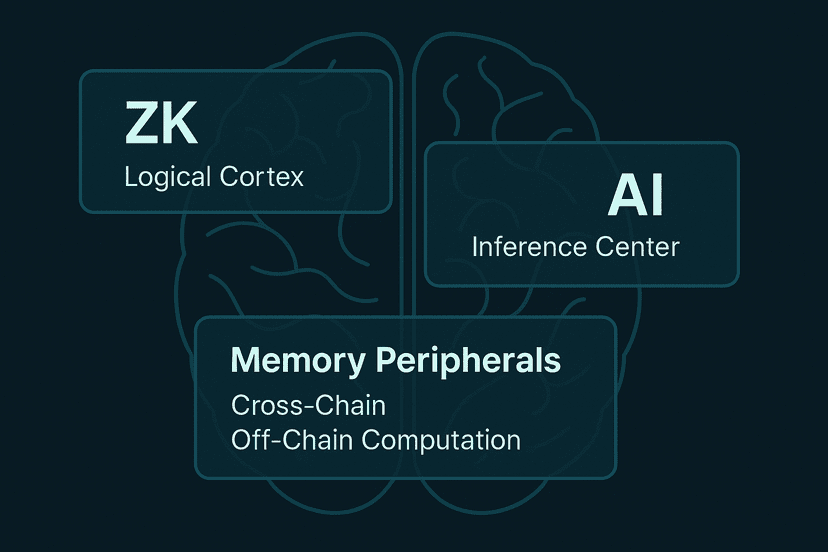Blockchain has been like an 'abacus' for the past decade: it can count but cannot think.
If Web3 wants to truly evolve, it must grow a 'brain':
Can reason (AI)
Can remember (cross-chain data)
Can self-correct (ZK verification)

And Lagrange just happens to bring all three together.
Therefore, it is not just a simple tool, but more like the nervous system of Web3.
One, ZK: the brain's 'logical cortex'
Logical thinking relies on rigorous reasoning, ZK proofs are the logical cortex on-chain.
It is responsible for checking every computation process, ensuring 'truth and falsehood' are accurately distinguished.
In the world of Lagrange, any unproven result is completely invalid.
Two, AI: the brain's 'reasoning center'
AI gives the on-chain system the ability to 'predict the future'.
Through zkML, Lagrange can put the results of AI on-chain and attach a 'truth seal'.
In other words, on-chain can finally boldly use AI without worrying about fabricating information.
Three, cross-chain and off-chain computation: the brain's 'memory and peripherals'
The brain alone is not enough; it also needs to access information from the external world.
Lagrange's coprocessor acts like memory storage, bringing in data from different chains;
Off-chain computation is like peripherals, complex tasks are run externally, and the results are finally verified and written back on-chain.
Four, $LA token: neurotransmitter
A brain cannot function without energy transfer.
In Lagrange, this energy is the $LA token:
Payment calculation fee
Incentivize Prover nodes
Governance voting, regulating the entire 'neural network'
It is essential for maintaining the operation of the on-chain brain.
Ending joke
Previous blockchains could only 'keep accounts'.
Now $LA
Want to make it 'think'.
Some say Web3 needs a new narrative.
I think, is the story that 'gave the chain a brain'.
Thanks to the officials for equipping the on-chain system with a CPU, and thanks to everyone for reading.
I am Coin Observer, and next time we will continue to brainstorm.
